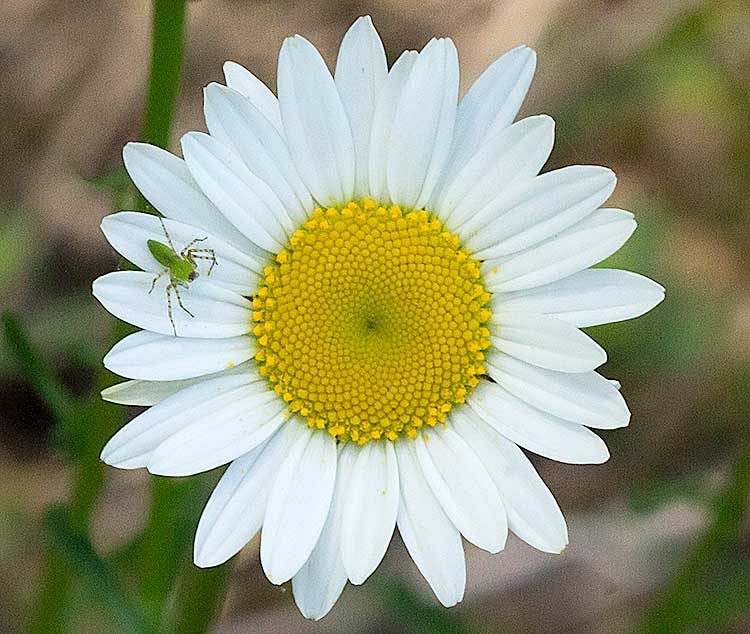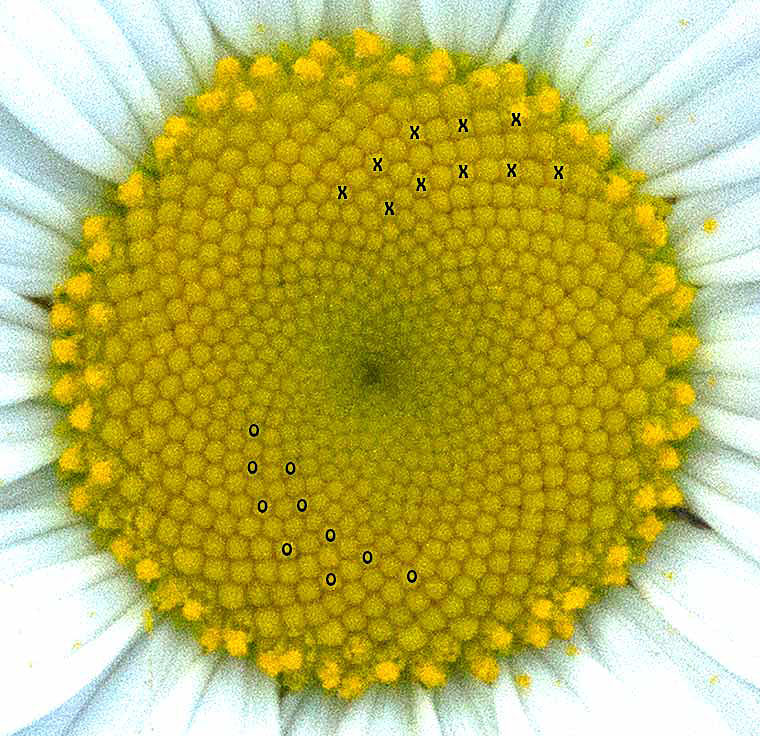Oxeye Daisies (Chrysanthemum leucanthemum) are in full bloom along local roadsides. Even such a common plant has interesting things about it. The first thing you will probably notice in the photograph above is the tiny green Crab Spider. There are many species of Crab Spiders, and all share a couple of traits. They move sideways in the same manner as a regular crab. Also, their second and third pairs of legs are longer than their fourth pair, which is unusual for spiders. They make a living by lurking around, often on flowers, and seizing any insects that come by.
The second interesting thing is the structure of the Daisy flower itself. Although at first glance it might appear to be a single flower, it is actually a large number of flowers grouped into a “head”. There are two types of flowers present here. The white petal-like structures around the outside of the flower head are actually modified flowers called ray flowers. They are sterile and only serve to attract pollinators. The tiny yellow structures that make up the bulk of the flower head are the disk flowers. Disk flowers are fertile and each small flower will produce a seed if it is fertilized.
The arrangement of the small yellow disk flowers is also interesting. Their arrangement is not random, it has a subtle order. If you examine closely the collection of yellow disk flowers in this Daisy, you can see that they are arranged in a very specific way. The individual flowers form rows that are arranged in a spiral fashion. There are two sets of spirals, one which appears to spiral to the left as one goes from the outside of the disk flower group toward the center, and one which appears to spiral to the right as one goes from the outside of the disk flower group toward the center. These two sets of spirals can be seen in the photograph above. I have enlarged the photograph below and labeled a couple of rows of the two types of spiral, two of the left hand spirals with a series of X’s and two right hand spiral with a series of O’s.
But this is not the end of the story. If one counts the number of right-hand spirals (as I did by printing the picture and marking them as I counted), the total will be 34. Of left-handed spirals there are 21. Almost every daisy of a comparable size in the field will have these same numbers of spirals. What is special about the numbers 21 and 35? There is a mathematical number series called the Fibonacci Series. It starts with 1,1 and then each consecutive term is formed by adding the two previous terms. Thus the Series is 1,1,2,3,5,8,13,21, 34, 55, 89 ….
The numbers of right hand (21) and left hand spirals (34) are consecutive members of the Fibonacci series. This feature is found in many sorts of natural objects: the spirals on a pineapple fruit, on a pine cone, or on a head of sunflower seeds. This sort of pattern seems to optimize the packing so that the maximum number of flowers (or seeds) can be placed in the smallest space.
Fibonacci was an Italian mathematician who lived from 1170 to 1250 (approximate dates). There are a lot more examples of Fibonacci numbers in nature at http://www.maths.surrey.ac.uk/hosted-sites/R.Knott/Fibonacci/fibnat.html.
The scientific name of this plant is also interesting. Chrysanthemum is from Greek and means “golden flower”; leucanthemum means “white flower”, so the scientific name translates to English as “golden flower white flower”!



We had some that just appeared one day when we lived in FL. I transplanted & enjoyed many bouquets in my Talavera pitchers sitting in my kitchen windows. Remind me to buy some!!!!
I took the picture in my field. You can just dig up some there if you want.
wow thats amazinnnnn boi